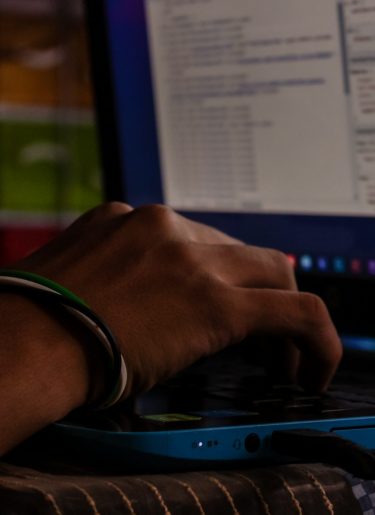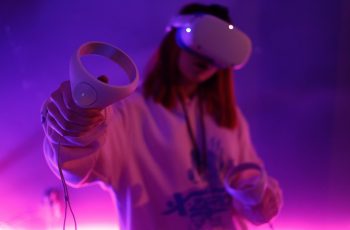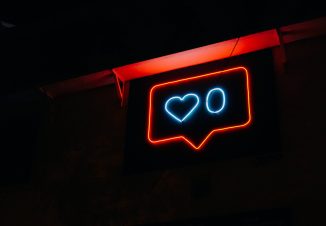
This is the second article in our AI 101 series, where the team at Lewis Silkin, Ius Laboris’s UK firm, unravel the legal issues involved in the development and use of AI text and image generation tools. In the first article of the series, we looked at how generative AI tools are trained and why disputes have arisen involving some of the major AI companies in both the UK and US.
The recent proliferation in AI technology has brought us to the precipice of a new era, where written and creative output can be generated by relying heavily on Artificial Intelligence.
In response to basic user prompts, OpenAI’s ChatGPT, hailed by some as the most important technological development since the invention of the printing press or the internet itself, can instantaneously generate answers, stories, plans, essays, speeches, computer code and (whisper it quietly) even basic contracts.
Similarly, platforms such as Midjourney and DALL-E 2 are able to generate images of almost anything that comes to the mind of the requesting user in any artistic style, all in less time than it takes to make a cup of tea.
The relative speed and ease with which these tools can create new content means companies across a wide range of industries are relying on AI to help create content and deliverables. Last month, Buzzfeed announced it was planning to harness artificial intelligence as part of its core business to personalize and enhance its online quizzes and content (and that it would also be cutting about 12% of its workforce to rein in costs).
However, when using AI to create content, an important question arises. Is the output of generative AI protected under IP law? The short answer is: it depends!
IP ownership can be a complex issue and, when it comes to AI–generated works, the answer will likely vary depending on:
From a UK perspective, artistic works are protected by copyright if they are original, which is generally interpreted to mean that the work must be ‘the author’s own intellectual creation’. The key question at the outset is, therefore: who is the author that owns the work in the eyes of the law?
Unlike most other countries, UK legislation can provide copyright protection to a work generated by a computer in circumstances where there is no human author. The law provides that such works will be owned by a human or corporate person, but the computer program or AI itself can never be the author or owner of the IP. Instead, section 9 of the Copyright Designs and Patents Act 1988 (CDPA) designates the human author of computer-generated works as ‘the person by whom the arrangements necessary for the creation of the work are undertaken’, with copyright protection lasting for 50 years from the date the work is created. This means that for wholly AI–generated artwork the law would most likely designate the platform creators (i.e. those who designed the AI technology) as the authors, rather than the AI itself.
In contrast, in the US a work must be the result of original and creative authorship by a human author to enjoy protection. As a result, the U.S. Copyright Office will not register a work that was created purely by an autonomous artificial intelligence tool.
Under UK law, when it comes to identifying who the human author of an AI–generated work is, it is necessary to consider the level of input provided by the human user.
Where an AI platform requires human prompts but the process behind creating the artistic work is mostly the result of automated decision-making by the AI computer algorithm – that is, with minimal input by the human user other than basic text prompts – then to the extent the AI work can be protected by copyright, the likely starting point would be to assume that the output would be owned by the platform creators.
However, where the platform requires a much greater degree of input and control by the human user through prompts or uploaded materials in order to formulate the concept (and the AI acts more as a tool in bringing the idea to life), it becomes more likely that the author and owner of any copyright–protected work would the human user.
Irrespective of the legal copyright ownership position, it’s always important to check the T&Cs of the relevant platform to assess the contractual terms on which the output is being provided to the user.
Some platforms will take the position that the final output is owned by the user and any IP in the output is therefore assigned to the user on creation. Other platforms may take the position that any IP in the output stays with the platform creators and is only provided to the user under a licence, which may come with restrictive terms of use.
This is a vital consideration for companies and agencies relying on AI to create project deliverables where the end-client expects to own the deliverable outright. If the T&Cs of the relevant AI platform do not assign the IP in the output to you in the first instance, you will not have the necessary IP rights to transfer full ownership of that work to the end-client.
It’s fair to assume that AI will inevitably test whether our existing rules around IP authorship and ownership are fit for the modern age. Most intellectual property frameworks, including the UK’s, were not drafted with today’s AI technology in mind, so we may well see IP laws revised in the near future to account for the role AI will play in content creation. For now, the key first step for those using AI in their everyday business or personal lives will be to consider the T&Cs of the relevant AI platform and to make sure you have all the rights necessary to use the final output as you desire.
For more information
about AI



